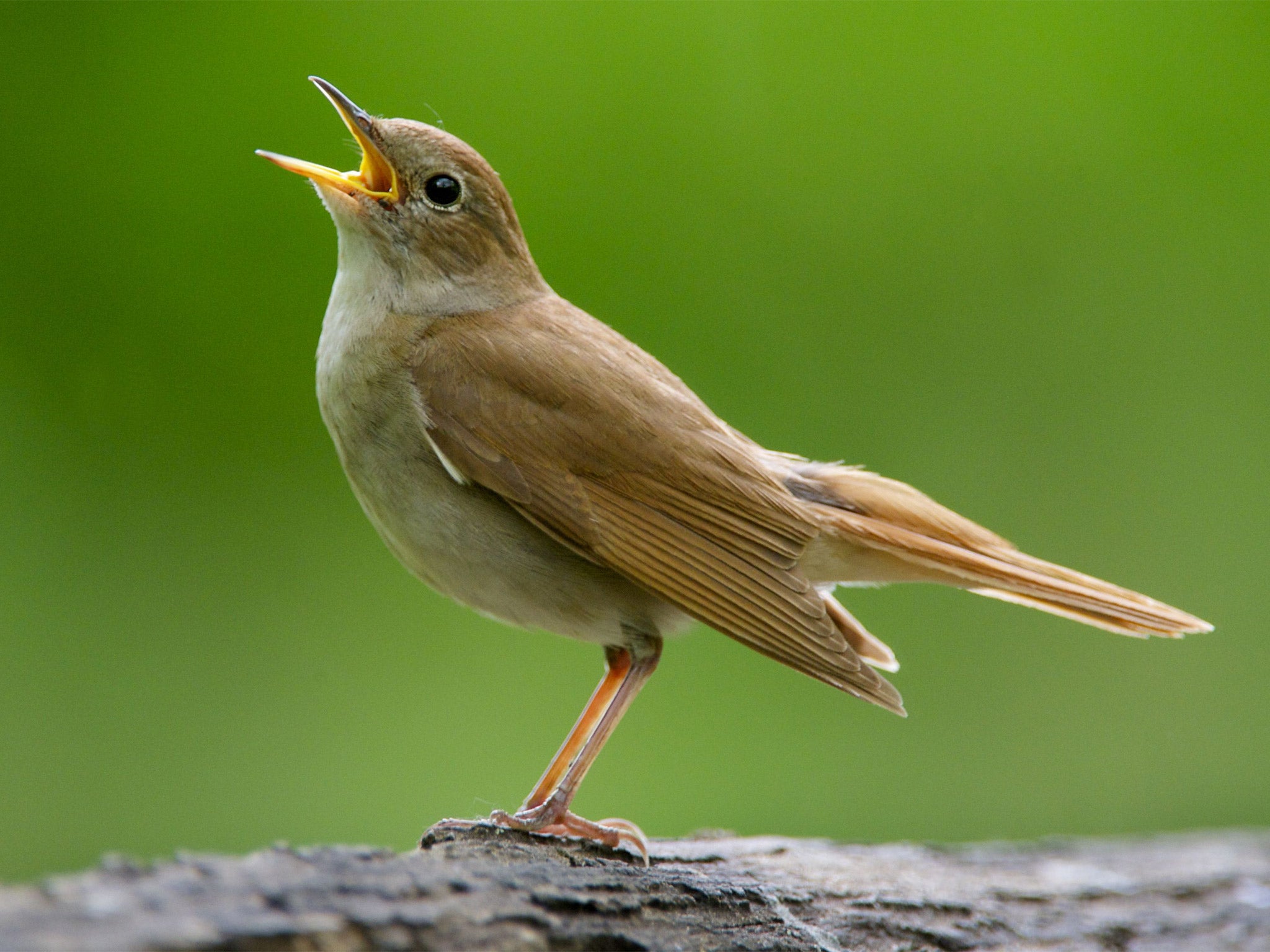Male nightingales sing complex songs to show females they will be good fathers, say scientists
Nightingales use their songs to advertise their family values, according to new research

The mystery behind the nightingale’s beautiful song has been revealed, with scientists finding that male birds sing complex notes to prove to females that they would be a good father to their children.
Nightingales use their songs to advertise their family values, according to new research which discovers that the better the singer, the more support they are likely to offer their young family by feeding and defending them from predators.
But while the beauty comes from the complexity of the song, the effect it has on the females is based on something far more mundane – the amount of effort the singer has put into his performance.
Researchers at the Freie Universitat Berlin found that complicated choral arrangements are much harder to sing, especially when they include frequent appearances of long buzzing sounds and require the bird to be in good physical condition.
In pictures: Britain's first 'national bird'
Show all 10“We don’t think the female is concerned with the beauty of the song but rather the information encoded in the song that tells her about the singer’s characteristics – his age, where he was raised, the strength of his immune system and how motivated he is to contribute to bringing up the young,” Professor Silke Kipper, one of the report’s authors, told The Independent.
“The songs can also be a good indication of the bird’s ability to learn, which is another important characteristic of a good parent.”
Nightingales typically have a range of about 180 “riffs”, or song sequences, taken from a total repertoire for the species of about 250 buzzes, trills and whistles. They are learnt at the beginning of the bird’s life, like a language.
With one eye on the even longer term, female nightingales are also concerned with the “sexy song hypothesis” when it comes to choosing their mate, Prof Kipper says. This like-father-like-son theory is based on the idea that the male offspring from union with an accomplished singer is likely to result in a nightingale that is attractive to females, increasing the chance of extending the family tree in the next generation. The female is choosing an attractive male in order to give her male children the same attractive characteristics,” she says.
The male can improve its attractiveness by bringing order to his songs – performing them in a lengthy loop, repeating the sequences over and over in the same order. Older males are known to bring greater order to their songs, suggesting that “ordered singing” could indicate experience with the breeding grounds.
“This would make them better at setting up nests, knowing where to find food and where the dangers lie – such as a street or train track close by,” Prof Kipper said.
The researchers studied 20 male nightingales, analysing their nocturnal singing early in the breeding season. They then analysed video footage of their nests after they had found a mate, along with data from electronic tags.
Subscribe to Independent Premium to bookmark this article
Want to bookmark your favourite articles and stories to read or reference later? Start your Independent Premium subscription today.

Join our commenting forum
Join thought-provoking conversations, follow other Independent readers and see their replies